There IS hope: how I successfully healed my eczema naturally
- Jennifer Ide
- Sep 30, 2019
- 5 min read
Updated: Feb 13, 2023

I am writing this post for one purpose - to give hope.
October 2019 is National Eczema Awareness Month. To participate, I would like to share my story. By sharing my own journey with eczema and how I managed to reverse my symptoms, I hope that you feel healing is a possibility for you too!
For those that have eczema, I feel you. Having eczema comes with particular challenges that may be difficult for those who do not have it to really understand. That is what makes this skin condition hard to deal with at times. It can be very lonely and isolating. Please know that you are not alone.
Going through my own journey with what doctors called eczema, I know what it’s like to be overcome with a lot of fear --- fear that there is no solution --- fear that your skin is never going to heal --- fear that the eczema is going to get worse, etc. I also know the frustration of trying one remedy after another and going from doctor to doctor, only to be told that there is no solution, other than to manage my symptoms using strong meds that fail to actually address the underlying cause.
Although my journey with eczema was really challenging, I wouldn’t have changed it for anything. From the experience, I found purpose and strength. After successfully reversing my symptoms using solely natural approaches, I am now dedicated to helping others heal their skin!
Below, I share some tips that I used to reverse my symptoms. I hope they help!
Before & After
The 6 things I did to reverse my severe eczema
Changed my diet --- I removed sugar, dairy, gluten, and nightshade vegetables. I ate plant-based, where my diet consisted of ~ 90% plants (vegetables, fruits, nuts, seeds) and ~ 5% animal products (meat, fish, eggs). The plant foods I ate were raw. Once the diet was laid down as the foundation, I went to work on my gut. I did a thorough gut cleanse, followed by a gut restoration protocol. New research is showing a very strong relationship between gut health and skin health (1). In order to have good skin, the gut has to be healthy.
Did light exercise on a consistent basis --- I walked about 30 minutes everyday. I walked everywhere - to the grocery store, to church, to the lake, etc. Walking is great to help move your lymphatic system. This system is your body’s sewage system, where it transports toxins and waste from your cells (2). Also, exercise helps to reduce stress, a common culprit in eczema flare ups (3, 4). It’s important to note that intense exercise may make your symptoms worse, so I do suggest to stick to light intensity exercise.
Went to bed early and woke up early --- I went to bed when the sun went down and woke up when the sun rose. I really loved doing this. There was something magical about being up at 5am when the majority of the world was still asleep. By following this routine, I adhered to my circadian rhythm. Studies show that the circadian rhythm influences skin barrier function and the disruption of it plays a role in the development of eczema (5).
I implemented stress management strategies --- I soaked my body in a lukewarm Epsom salt bath for a minimum of 20 minutes a day. This really helped to relax my body and soothe my skin temporarily. Also, I meditated a lot. Some days, I would meditate for 2 hours. This would help to center myself and gain focus. I started to stress over the little things in life less often and I began to focus on what was most important to me.
I reduced the chemical load in my body --- As I was going through a cleanse, I wanted to lessen the toxic load on my body as much as possible. To do this, I stopped wearing makeup and perfume, used very little product to clean my skin, ate organic foods whenever possible, switched over to a hypoallergenic scent-free laundry detergent, avoided using fabric softener, and drank only spring water.
Eliminated all my intolerances --- Finding out what I was intolerant to was a huge part of my healing process. Using a fascinating modality called BIE (BioEnergetic Intolerance Elimination), I found out that I was intolerant to fats and oils and was normalized to the frequencies of fats and oils. Once I was normalized to these frequencies, my body no longer responded inappropriately when I ate them.
Where you can start
The first step to healing your eczema is acquiring a winning mindset. This involves believing that healing is a possibility for you. A positive mindset is absolutely key for kickstarting the healing process!
I hope that the list above has given you some ideas that you can start with. The diet that I chose for myself during my healing journey may or may not suit your particular needs or eating habits. If you would like some guidance on what to eat and what to avoid to get your healthy skin back, please book an initial consultation with me. During the initial consultation, I will also help you identify any intolerances that may be playing a role in your flare ups.
I look forward to connecting with you and to accompany you on your healing journey!
Want to learn more?
Jennifer Ide is a BIE Practitioner and Holistic Nutritionist, based in Toronto. She has helped many people with eczema, acne and hives, heal their skin naturally. She is here to support you and answer any questions that you have. There are many ways to connect. You can email directly (hyperlink to email), send a message on instagram @jenniferide, or book a free meet-and-greet. Connect and see how she can help you!
References
Salem, Iman et al. (2018). The Gut Microbiome as a Major Regulator of the Gut-Skin Axis. Frontiers in Microbiology. 9, 1459.
Moore, J.E.M. and Bertram, C.D. (2018). Lymphatic System Flows. The Annual Review of Fluid Mechanics. 50, 459-482.
Arnd, J. et al. 2008. Stress and atopic dermatitis. Current Allergy and Asthma Reports. 8, 312-317.
Hiramoto, K. et al. (2013). Mild exercise suppresses exacerbation of dermatitis by increasing cleavage of the β-endorphin from proopiomelanocortin in NC/Nga mice. Journal of Clinical Biochemistry and Nutrition. 52, 58-63.
Vaughn, A.R. et al. 2018. Circadian rhythm in atopic dermatitis-Pathophysiology and implications for chronotherapy. Pediatric Dermatology Journal. 35, 152-157.
Disclaimer: Note that content on this website is intended for informational purposes only, and is not intended as a substitute for the advice provided by your physician or other healthcare professional, nor is it meant to diagnose or treat a health problem, symptom or disease.

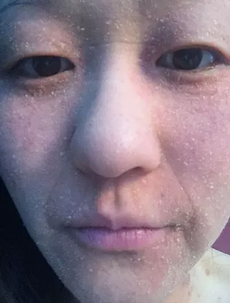




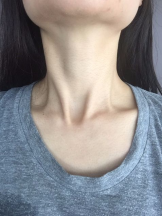
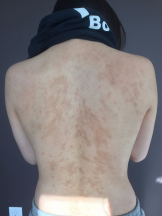
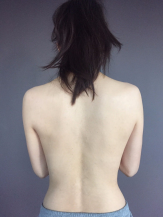
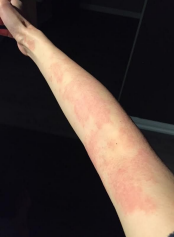
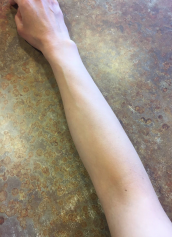



Comments